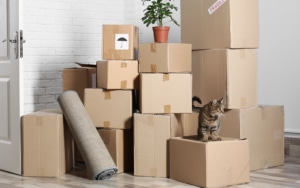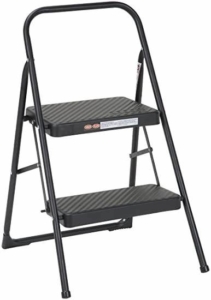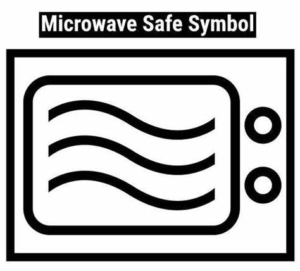When is Hurricane Season in Florida 2023 Guide
The hurricane season in Florida 2023 will last from June 1st to November 30th, with the peak of the season occurring between August and October. This is the general timeframe yearly for hurricane season. During this time, we are the most vulnerable to the formation and impact of tropical storms and hurricanes. It’s important for residents and visitors to stay informed and prepared for the possibility of severe weather during this time. We will discuss a little history, preparation, protecting yourselves, your property, and more in this blog.
What are Hurricanes?
Hurricanes are large, intense tropical storms that form over warm ocean waters and are characterized by strong winds, heavy rain, and high waves. They are known by different names in different parts of the world, including typhoons in Asia and cyclones in the Indian Ocean region.
Hurricanes develop from low-pressure systems that form over tropical waters and are powered by the heat released from the ocean surface. As the storm system gains strength, it begins to rotate and develop strong winds that spiral around a central eye. The eye is the calmest part of the storm, with clear skies and light winds, surrounded by a wall of strong winds and heavy rain.
Hurricane intensity is measured on the Saffir-Simpson Hurricane Wind Scale, which ranges from Category 1 (minimal) to Category 5 (catastrophic). The strength of a hurricane is determined by the maximum sustained wind speed and the potential for storm surge, which is the rise in sea level caused by the storm’s winds pushing water towards the coast.
Not just Florida is concerned but Hurricane season impacts the Atlantic Ocean, the Gulf of Mexico, and the Caribbean Sea from June to November.
Hurricane Categories Defined
Hurricane intensity is measured on the Saffir-Simpson Hurricane Wind Scale, which ranges from Category 1 to Category 5. The scale is based on the maximum sustained wind speed and is used to describe the potential damage and danger associated with a hurricane.
- Category 1: Sustained wind speeds of 74-95 mph. Category 1 hurricanes are considered to be the least dangerous and typically cause minimal damage to well-constructed buildings. However, they can still pose a threat to coastal areas due to high waves and storm surges.
- Category 2: Sustained wind speeds of 96-110 mph. Category 2 hurricanes can cause significant damage to poorly constructed buildings, and can cause widespread power outages and significant damage to trees and other vegetation.
- Category 3: Sustained wind speeds of 111-129 mph. Category 3 hurricanes are considered to be major storms and can cause devastating damage to buildings and infrastructure, including the complete destruction of smaller structures.
- Category 4: Sustained wind speeds of 130-156 mph. Category 4 hurricanes are extremely dangerous and can cause catastrophic damage, including the complete destruction of many buildings and widespread power outages.
- Category 5: Sustained wind speeds of 157 mph or higher. Category 5 hurricanes are the most severe and can cause catastrophic damage, including the complete destruction of many buildings, widespread power outages, and significant damage to infrastructure and transportation networks.
Hurricane Notification Warnings
When a hurricane is approaching, various notification warnings are issued to alert residents of the potential danger and to advise them on necessary actions to take. The most common warning systems used in the United States include:
- Tropical Storm Watch: Issued when tropical storm conditions are possible within the next 48 hours. Residents in the affected area should begin preparing for the possibility of severe weather.
- Tropical Storm Warning: Issued when tropical storm conditions are expected within the next 36 hours. Residents in the affected area should take necessary precautions and complete their storm preparations.
- Hurricane Watch: Issued when hurricane conditions are possible within the next 48 hours. Residents in the affected area should prepare for the possibility of severe weather and be ready to evacuate if necessary.
- Hurricane Warning: Issued when hurricane conditions are expected within the next 36 hours. Residents in the affected area should evacuate if advised to do so by local authorities and take necessary precautions to protect themselves and their property.
These official warning systems, you should also stay informed through local media, weather forecasts, and emergency alerts issued by local authorities. It’s important to follow the instructions of local authorities and to evacuate if advised to do so, as the potential danger posed by a hurricane can change quickly.
Some of Florida’s Worst Hurricane History
Florida has a long history of being impacted by hurricanes, with the state’s long coastline and warm waters making it particularly vulnerable to these severe weather events. The last being Hurricane Ian-Catergory 4 on the coast of Fort Myers. Over the years, Florida has been hit by many powerful and devastating hurricanes, causing significant damage and loss of life.
Some of the other most notable hurricanes in Florida’s history include:
- Hurricane Andrew in 1992: This Category 5 hurricane caused widespread damage and devastation in South Florida, causing over $26 billion in damage and killing 65 people.
- Hurricane Charley in 2004: This Category 4 hurricane made landfall in southwestern Florida, causing significant damage and killing 15 people.
- Hurricane Irma in 2017: This Category 5 hurricane caused widespread damage and power outages throughout the state, causing over $50 billion in damage and killing 84 people.
- Hurricane Michael in 2018: This Category 5 hurricane made landfall in the Florida Panhandle, causing widespread damage and killing 44 people.
Hurricane Preparation Example Checklist
If you are preparing for a hurricane in Florida, it’s important to gather the following supplies:
- Water – at least one gallon per person per day for at least three days
- Non-perishable food items such as canned goods, energy bars, and dried fruit
- First aid kit with essential medications and medical supplies
- Battery-operated radio to receive updates and emergency broadcasts
- Flashlights and extra batteries
- Portable phone charger or backup battery
- Cash, as power outages may prevent the use of credit or debit cards
- Personal hygiene items such as toothpaste, soap, and sanitary supplies
- Trash bags and cleaning supplies
- Blankets, pillows, and extra clothing
- Copies of important documents such as identification, insurance policies, and bank information
- A manual can opener
- Fuel for your car and any generators you may have
- Sandbags or flood barriers to protect your home
- Tools such as a wrench or pliers to turn off utilities
- A cooler for food storage in case of power outages
- Maps and a compass in case roads are closed or inaccessible
Here are some products you can buy to protect your property from hurricanes:
- Storm shutters: Storm shutters, such as accordion shutters or roll-down shutters, can be installed on your windows and doors to protect your home from wind and flying debris.
- Impact-resistant windows: Impact-resistant windows are designed to withstand high winds and flying debris, providing added protection for your home.
- Roof straps and hurricane clips: These products help to secure your roof to your home’s structure, reducing the risk of damage during a hurricane.
- Garage door reinforcements: Reinforcing your garage door can help to prevent it from being damaged or destroyed during a hurricane, reducing the risk of water damage and other types of damage to your home.
- Backup generator: A backup generator can provide power to your home in case of a power outage, helping to keep essential systems and appliances running during and after a hurricane.
- Flood barriers and sandbags: Flood barriers, such as flood shields and sandbags, can be used to protect your home from floodwaters and storm surges.
- Emergency kit: An emergency kit should include supplies such as water, non-perishable food, first aid supplies, flashlights, and a battery-operated radio.
I hope this has been helpful. If you have additional questions and want to get in contact with GGR Home Inspections please send us a note, text, or call.







Pingback: The Magic of Living In Miami: Is It Right For You?
Pingback: Approved Windstorm Products - GGR Home InspectionsPre
Pingback: Be Preapred: Impact Windows Can Enhance Your Home
Pingback: Approved Roof Systems in Florida HVHZ-5 Star